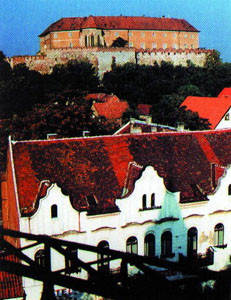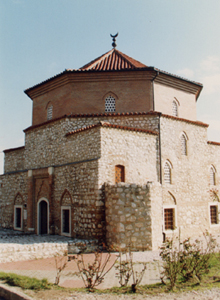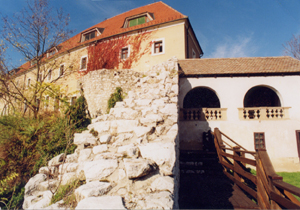|
With 10,875 inhabitants Siklós is the southernmost town of Hungary. The castle, its most significant historic monument, was first mentioned in documents in 1294. Siklós is one of the most intact and homogeneous historic complexes in Hungary. Almost all epochs of the history of architecture: Romanesque, Gothic, Renaissance and Baroque can be seen here. The most outstanding examples are the chapel and the closed balcony on the southern facade. Count Kázmér Batthyány, foreign minister of the Kossuth Government is buried in the chapel. The statue in the garden portrays Dorottya Kanizsai, a former mistress of the castle, who had the victims of the Battle of Mohács buried. The reconstructed Bey Malkocs djami was granted the Europa Nostra award in 1994. The Serbian-Orthodox church with a unique iconostas can also be seen. The baroque Franciscan shrine and church with its Gothic sanctuary is a famous place of pilgrimage. Exhibitions in the town include: Castle Museum, Town Gallery, Ceramics Studio, local history exhibition. There is an open-air bath in the town. Siklós is extremely rich in sculptures and memorial tablets. In one of the centres of the Villány-Siklós Wine Road visitors are welcome to taste the excellent wines. The medieval parish church with the adjoining monastery stand on the south-eastern part of the Castle Hill. The church, originally built at the beginning of the 14th century for the Augustinian "surpliced canon" then rebuilt several times and finally, after the expulsion of the Turks, it was given to the Franciscan order. Experts' opinion about the studied and restored frescoes is that "both as a whole and in the fineness of detail they are the most exquisite group of Gothic frescoes in medieval Hungary". In the sanctuary the red marble monument of palatine I. Miklós Garai can be seen. Today the monastery is a Ceramics Studio with a permanent exhibition section. The history of the shrine goes back to the Roman age. The busy road connecting Sopianae and Mursa (today - Eszék) ran under the hill, and the spring there served as a place for a rest for travellers. Next to the spring a statue of Mary was erected, later the Christian Slavs placed an altar of Mary here. The village was named after Győd, who was one of the chieftains of the Hungarian tribes arriving here in the 10th century. In the 11th century a chapel was built in honour of Mary, which was rebuilt in Gothic style in the 15th century and in Baroque style in the 18th century. In 1805 Pope Pius VII. established it as an official place of pilgrimage. East of the devotional church you can find the Holy Well, the water of which was taken home by the pilgrims in the famous jugs of Gyűd. A feast is held here on every Mary's day and on the important religious holidays, i.e. 25-27 times annually. This time the church and its vicinity is visited by many people, the number of which was nearly 500,000 in the past few years. Lodgings in Siklós: More lodgings in Siklós Pictures of Siklós
|
Siklós map nagyítása >>
|
|
|
Hungary - Siklós |
|
|
|
||
|
Saturday, 19. July 2025. - 00:54:59 |
||


